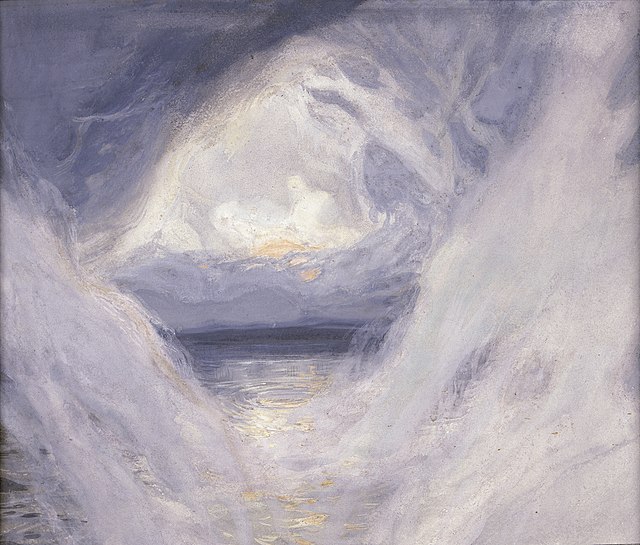Genesis creation narrative
The Genesis creation narrative is the creation myth of both Judaism and Christianity. The narrative is made up of two stories, roughly equivalent to the first two chapters of the Book of Genesis. In the first, Elohim creates the heavens and the Earth in six days, then rests on, blesses, and sanctifies the seventh. In the second story God creates Adam, the first man, from dust and places him in the Garden of Eden. There he is given dominion over the animals. Eve, the first woman, is created from Adam's rib as his companion.
Cuneiform tablet with the Atra-Hasis Epic in the British Museum
Marduk, god of Babylon, destroying Tiamat, the dragon of primeval chaos
The Ancient of Days by William Blake (Copy D, 1794)
The first day of creation, by Jean Colombe from the Heures de Louis de Laval [fr] (see Louis de Laval)
A creation myth or cosmogonic myth is a type of cosmogony, a symbolic narrative of how the world began and how people first came to inhabit it. While in popular usage the term myth often refers to false or fanciful stories, members of cultures often ascribe varying degrees of truth to their creation myths. In the society in which it is told, a creation myth is usually regarded as conveying profound truths – metaphorically, symbolically, historically, or literally. They are commonly, although not always, considered cosmogonical myths – that is, they describe the ordering of the cosmos from a state of chaos or amorphousness.
The Creation (c. 1896–1902), painting by James Tissot
Structure of the world, according to Finnish mythology
In Maya religion, the dwarf was an embodiment of the Maize God's helpers at creation.
Brahmā, the Hindu deva of creation, emerges from a lotus risen from the navel of Viṣņu, who lies with Lakshmi on the serpent Ananta Shesha.




![The first day of creation, by Jean Colombe from the Heures de Louis de Laval [fr] (see Louis de Laval)](https://upload.wikimedia.org/wikipedia/commons/thumb/1/1a/Heures_de_Louis_de_Laval_-_BNF_Lat920_f2r_%28Dieu_cr%C3%A9ateur_de_la_terre%29.jpg/432px-Heures_de_Louis_de_Laval_-_BNF_Lat920_f2r_%28Dieu_cr%C3%A9ateur_de_la_terre%29.jpg)



